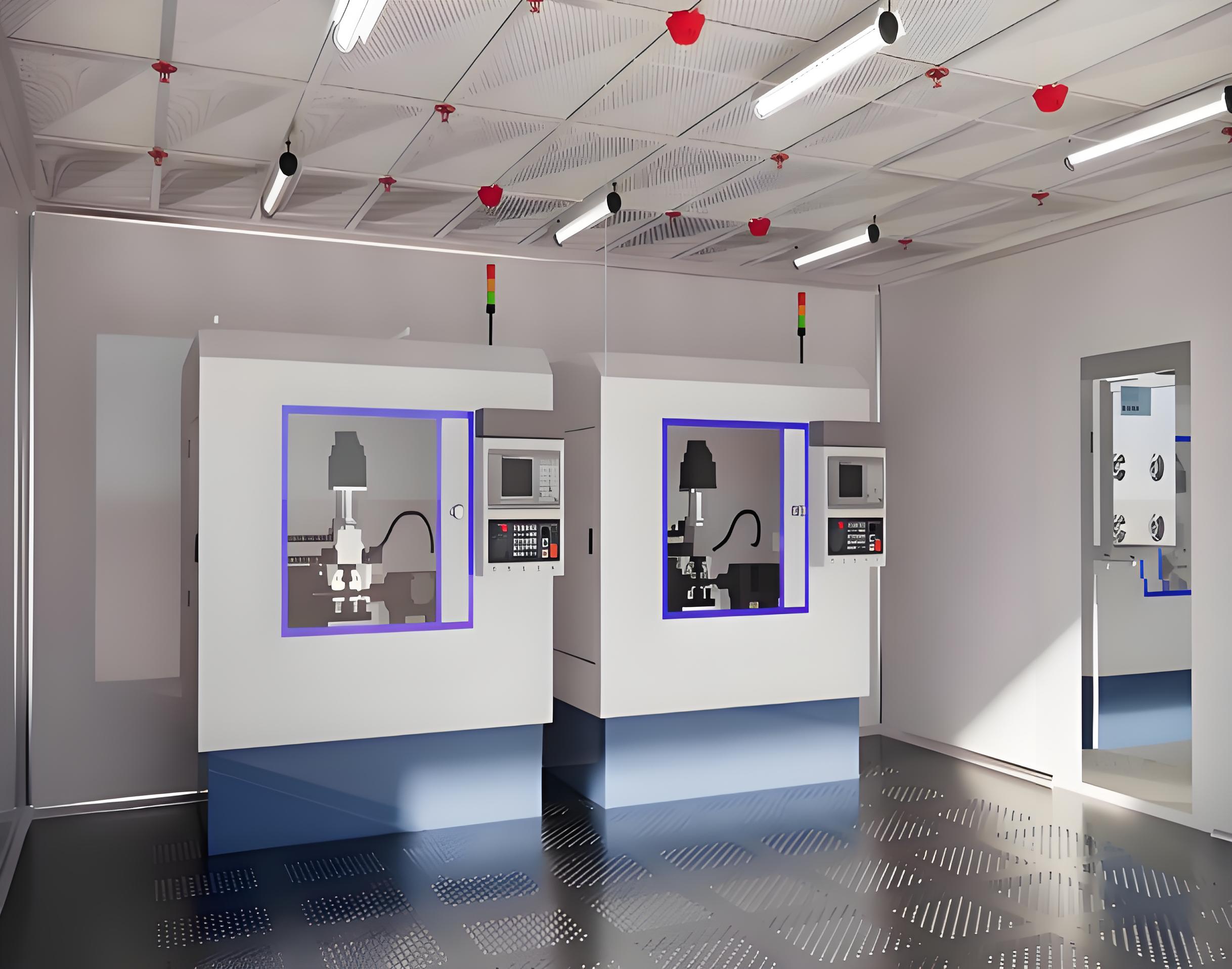

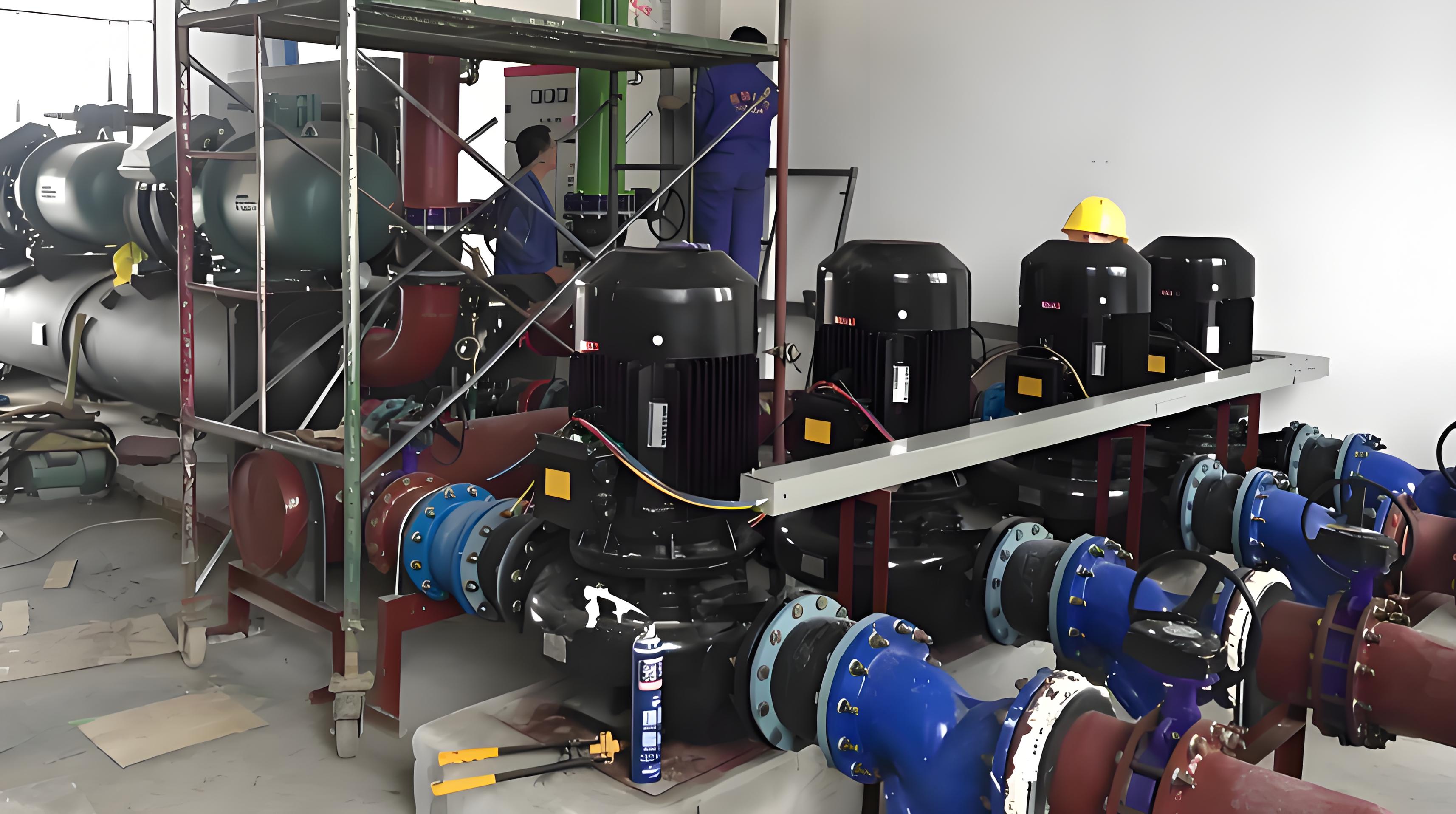
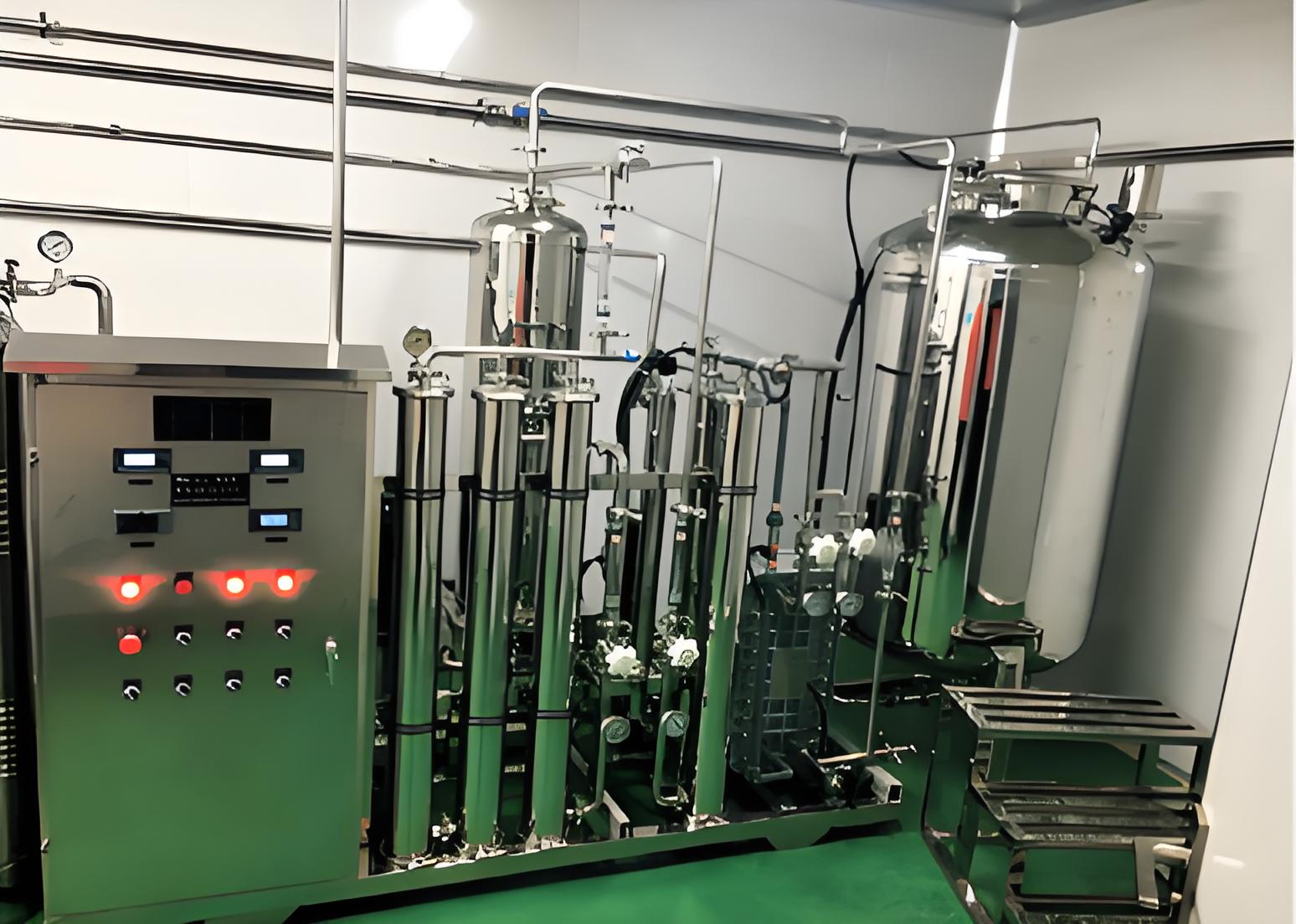

In the world of controlled environments, a cladding cleanroom plays a pivotal role in maintaining the stringent standards required for industries such as pharmaceuticals, biotechnology, electronics, and healthcare. The term "cladding" refers to the protective layering or coating applied to surfaces, which in cleanrooms, ensures that walls, ceilings, and floors are impervious to contaminants, easy to clean, and durable against harsh cleaning agents. This article delves into the critical aspects of cleanroom construction, focusing on how cladding cleanroom systems integrate with cleanroom panel systems, Cleanroom Envelope Construction, modular cleanroom panels, and the importance of selecting reputable cladding cleanroom manufacturers. By understanding these elements, facility managers and engineers can optimize their cleanroom designs for superior performance and compliance with international standards like ISO 14644.
A cladding cleanroom is not just about surface treatment; it encompasses the entire approach to creating a sealed environment that minimizes particulate and microbial contamination. The cladding process involves applying materials that provide a smooth, non-porous finish, which is essential for preventing the accumulation of dust, bacteria, or other pollutants. This is particularly crucial in settings where even microscopic particles can compromise product quality or research integrity. As we explore the interconnected components, we'll see how cleanroom panel systems form the backbone of these structures, supported by robust Cleanroom Envelope Construction and flexible modular cleanroom panels. Furthermore, partnering with experienced cladding cleanroom manufacturers ensures that all elements work harmoniously to achieve the desired cleanliness class, whether it's ISO Class 5 for semiconductor manufacturing or ISO Class 8 for medical device assembly.
The integration of these systems is vital for achieving energy efficiency, cost-effectiveness, and long-term reliability. In the following sections, we'll break down each component, providing insights into their functions, benefits, and how they contribute to a high-performing cladding cleanroom. This comprehensive overview will help you make informed decisions for your next cleanroom project, emphasizing the synergy between design, materials, and manufacturing expertise.
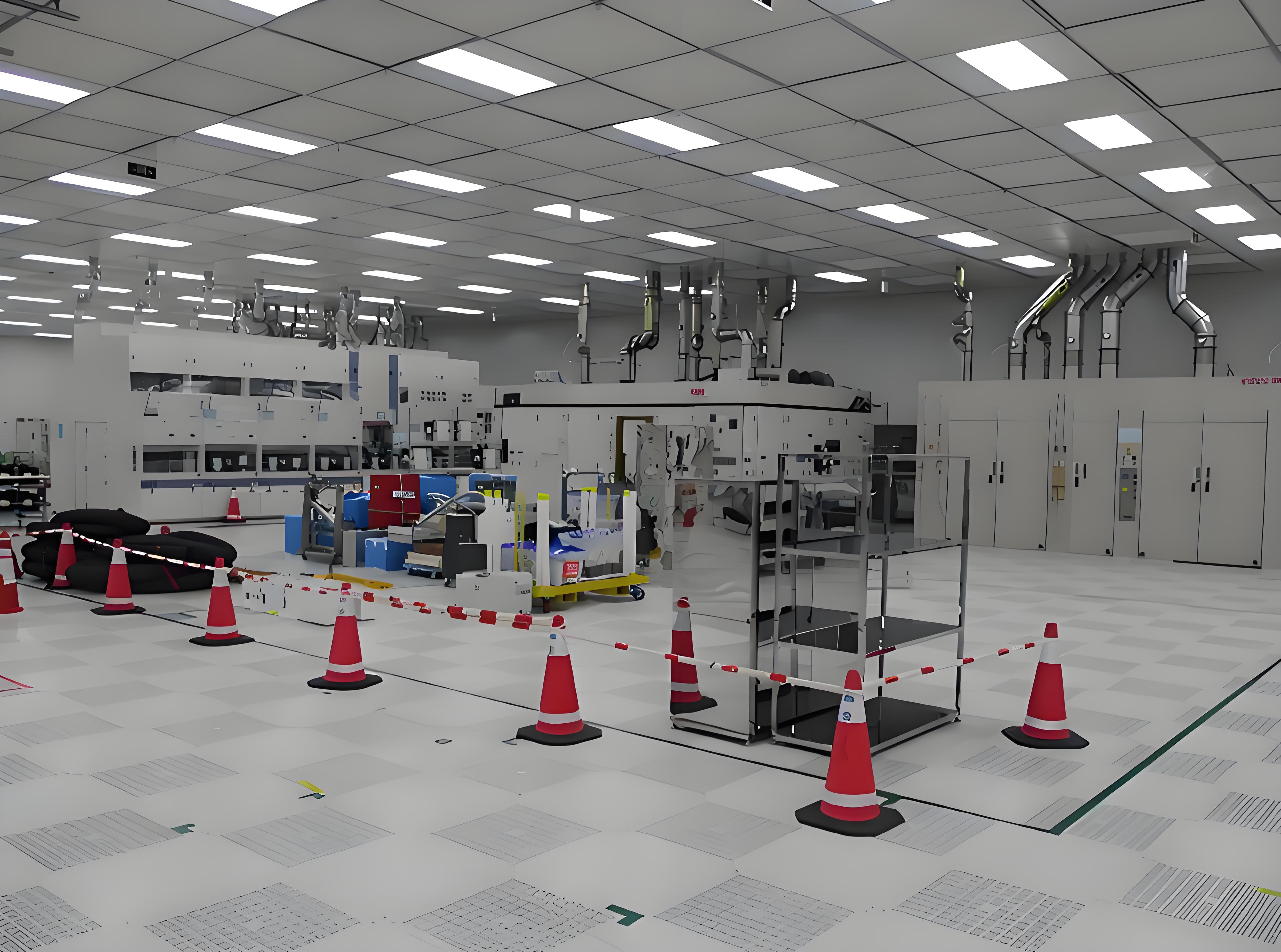
A cladding cleanroom refers to the application of specialized cladding materials to the interior surfaces of a cleanroom to enhance its cleanliness and durability. Cladding typically involves panels or coatings that are resistant to chemicals, moisture, and physical wear, ensuring that the environment remains uncontaminated. This is especially important in industries where air quality and surface purity are non-negotiable, such as in pharmaceutical production or microelectronics. The primary goal of a cladding cleanroom is to create a barrier that prevents the ingress of contaminants while facilitating easy decontamination processes.
In practice, a cladding cleanroom integrates with cleanroom panel systems to form a seamless enclosure. These systems are designed to meet specific cleanliness levels by controlling airflow, temperature, and humidity. The cladding aspect ensures that joints, edges, and surfaces do not harbor particles, which could otherwise lead to costly downtime or product recalls. Moreover, the use of advanced cladding materials can improve the cleanroom's lifespan, reducing maintenance costs over time. As regulations tighten and technology advances, the demand for effective cladding cleanroom solutions continues to grow, making it a cornerstone of modern cleanroom design.
The importance of a cladding cleanroom extends beyond mere compliance; it directly impacts operational efficiency and safety. For instance, in a biotech lab, improper cladding could lead to cross-contamination, affecting research outcomes. Therefore, understanding the role of cladding within the broader context of Cleanroom Envelope Construction is essential. This holistic approach ensures that every component, from walls to HVAC integrations, works together to maintain the integrity of the controlled environment. By prioritizing high-quality cladding, businesses can safeguard their investments and uphold the highest standards of hygiene and performance.
Cleanroom panel systems are fundamental to the structure of any cladding cleanroom, providing the framework that supports the cladding materials. These systems consist of prefabricated panels made from materials like stainless steel, aluminum, or composite plastics, which are designed for easy assembly and disassembly. The panels are engineered to be airtight, smooth, and resistant to corrosion, making them ideal for environments that require frequent cleaning and sterilization. In a cladding cleanroom, these panels serve as the base upon which cladding is applied, enhancing their protective properties.
One of the key advantages of cleanroom panel systems is their modularity, which allows for customization based on the cleanroom's size, layout, and cleanliness requirements. For example, in a facility using modular cleanroom panels, the system can be quickly reconfigured to accommodate changes in production lines or equipment upgrades. This flexibility is crucial in dynamic industries where adaptability can lead to significant cost savings. Additionally, cleanroom panel systems often incorporate integrated utilities such as electrical conduits and data ports, streamlining the installation process and reducing the risk of contamination from external sources.
When selecting cleanroom panel systems for a cladding cleanroom, it's important to consider factors like load-bearing capacity, fire resistance, and acoustic performance. These systems must comply with industry standards to ensure safety and efficiency. Moreover, they play a critical role in the overall Cleanroom Envelope Construction, which defines the boundary between the clean interior and the external environment. By investing in high-quality cleanroom panel systems, businesses can achieve a robust foundation for their cladding, leading to improved air filtration, better contamination control, and enhanced operational continuity. As technology evolves, we're seeing innovations in panel designs that incorporate smart sensors for real-time monitoring, further elevating the capabilities of a cladding cleanroom.
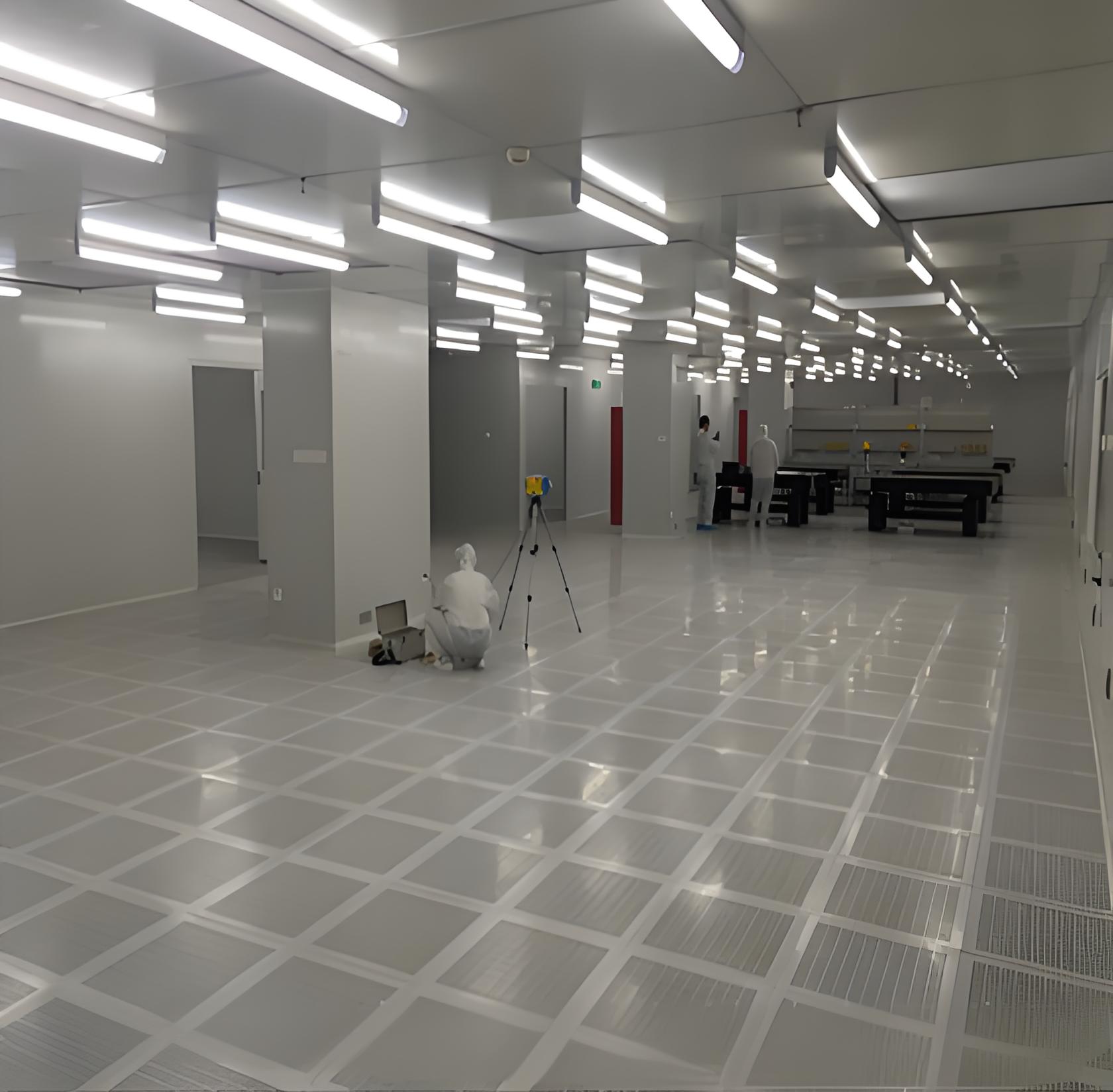
Cleanroom Envelope Construction refers to the process of building the outer shell of a cleanroom, which includes walls, ceilings, floors, and any penetrations for doors or windows. This envelope is designed to be hermetic, preventing the exchange of air and contaminants between the cleanroom and its surroundings. In a cladding cleanroom, the envelope construction is closely tied to the cladding application, as the cladding materials form the inner lining that ensures a smooth, impermeable surface. A well-executed Cleanroom Envelope Construction is essential for maintaining the pressure differentials that drive airflow from clean to less clean areas, a key principle in contamination control.
The design of Cleanroom Envelope Construction must account for various factors, including the cleanroom's classification, environmental conditions, and operational needs. For instance, in a high-level cleanroom like those used in semiconductor manufacturing, the envelope might include double-skinned panels with insulated cores to enhance thermal stability and reduce energy consumption. The integration of cladding cleanroom elements here ensures that the envelope remains intact over time, resisting wear from cleaning agents and physical impact. Furthermore, Cleanroom Envelope Construction often involves meticulous sealing of joints and seams using gaskets or sealants, which are complemented by the cladding to eliminate potential leak points.
In practice, Cleanroom Envelope Construction relies on collaboration between architects, engineers, and cladding cleanroom manufacturers to achieve a seamless build. This process includes rigorous testing for air tightness and particulate infiltration, often using methods like particle counting or pressure decay tests. By focusing on the envelope, businesses can prevent common issues such as moisture ingress or microbial growth, which could compromise the cleanroom's integrity. As part of a comprehensive cladding cleanroom strategy, the envelope construction sets the stage for effective contamination control, supporting the performance of cleanroom panel systems and modular cleanroom panels. Ultimately, a robust envelope not only meets regulatory requirements but also enhances the cleanroom's lifespan and reliability.
Modular cleanroom panels have revolutionized the way cladding cleanroom facilities are designed and maintained, offering unparalleled flexibility and efficiency. These panels are pre-engineered components that can be assembled on-site, allowing for rapid deployment and easy modifications. In a cladding cleanroom context, modular cleanroom panels provide the structural basis for applying cladding materials, ensuring a uniform and durable surface. Their modular nature means that they can be tailored to specific dimensions and configurations, making them ideal for both new constructions and retrofits in existing buildings.
One of the primary benefits of modular cleanroom panels is their cost-effectiveness. Compared to traditional stick-built constructions, modular systems reduce labor costs and construction time, as they come with standardized connections and minimal on-site fabrication. This is particularly advantageous in industries where time-to-market is critical, such as in vaccine production or electronics assembly. Additionally, modular cleanroom panels facilitate scalability; as a company grows, the cleanroom can be expanded or reconfigured without major disruptions. When combined with a cladding cleanroom approach, these panels enhance cleanliness by providing a seamless interface that minimizes joints and crevices where contaminants could accumulate.
Moreover, modular cleanroom panels are designed for compatibility with various cladding options, from epoxy coatings to laminated surfaces. This allows for a high degree of customization in terms of aesthetics, functionality, and compliance with specific industry standards. For example, in a healthcare setting, panels with anti-microbial cladding can be used to reduce infection risks. The integration of modular cleanroom panels into the broader cleanroom panel systems ensures that the entire structure is cohesive, supporting efficient airflow and filtration. As businesses increasingly adopt lean manufacturing principles, the use of modular cleanroom panels in cladding cleanroom projects enables agile responses to changing production demands, while maintaining the highest levels of contamination control.
Selecting the right cladding cleanroom manufacturers is a critical step in ensuring the success of any cleanroom project. These manufacturers specialize in producing high-quality cladding materials and systems that meet the rigorous demands of controlled environments. When evaluating cladding cleanroom manufacturers, it's important to consider their experience, certifications, and track record in delivering projects similar to yours. A reputable manufacturer will offer products that integrate seamlessly with cleanroom panel systems and modular cleanroom panels, providing a holistic solution for Cleanroom Envelope Construction.
Key factors to look for in cladding cleanroom manufacturers include their adherence to international standards like ISO 9001 for quality management and ISO 14644 for cleanroom classifications. They should also provide comprehensive support, from design consultation to installation and maintenance. For instance, some manufacturers offer custom cladding solutions tailored to specific environmental conditions, such as high humidity or chemical exposure. By partnering with experienced cladding cleanroom manufacturers, you can access innovative materials that enhance the durability and performance of your cladding cleanroom, such as anti-static coatings or fire-retardant panels.
Another aspect to consider is the manufacturer's ability to supply compatible components for the entire cleanroom ecosystem, including cleanroom panel systems and modular cleanroom panels. This ensures consistency in quality and reduces the risk of compatibility issues during construction. Additionally, top cladding cleanroom manufacturers often provide testing and validation services to verify that their products meet the required cleanliness levels. As the industry evolves, we're seeing a trend towards sustainable cladding options, such as recyclable materials, which can be a deciding factor for environmentally conscious businesses. Ultimately, choosing the right cladding cleanroom manufacturers not only safeguards your investment but also ensures that your cleanroom operates at peak efficiency, minimizing downtime and maximizing productivity.
The integration of various components in a cladding cleanroom is essential for achieving a harmonious and efficient operation. This involves coordinating cleanroom panel systems, Cleanroom Envelope Construction, modular cleanroom panels, and the expertise of cladding cleanroom manufacturers to create a unified system. A well-integrated cladding cleanroom ensures that all elements work together to maintain contamination control, support airflow patterns, and withstand operational stresses. For example, the cladding must bond effectively with the underlying panels to prevent delamination, which could introduce particulates into the environment.
In practice, integration begins during the design phase, where engineers model the cleanroom's layout to optimize the placement of panels, HVAC systems, and cladding materials. This often involves using Building Information Modeling (BIM) software to visualize how cleanroom panel systems and modular cleanroom panels interact with the Cleanroom Envelope Construction. By involving cladding cleanroom manufacturers early in the process, businesses can leverage their expertise in material selection and application techniques, ensuring that the cladding enhances rather than hinders the cleanroom's performance. This collaborative approach reduces the risk of errors and delays during construction.
Moreover, integrated cladding cleanroom systems facilitate easier maintenance and upgrades. For instance, if a section of the cleanroom requires repair, the modular nature of the panels allows for quick replacement without affecting the entire structure. This is particularly beneficial in high-stakes environments where downtime can lead to significant financial losses. Regular audits and performance checks help maintain the integrity of the integration, ensuring that the cladding cleanroom continues to meet its designed specifications. As industries advance towards Industry 4.0, we can expect greater integration of IoT devices within cladding systems, enabling real-time monitoring of environmental parameters. By focusing on seamless integration, businesses can build resilient cleanrooms that adapt to future challenges while upholding strict cleanliness standards.
The field of cladding cleanroom technology is continuously evolving, driven by advancements in materials science, automation, and sustainability. Future trends are likely to focus on enhancing the efficiency, flexibility, and environmental friendliness of cladding cleanroom systems. For instance, we're seeing a growing interest in smart cladding materials that can self-clean or change properties in response to environmental conditions. These innovations could revolutionize how cleanroom panel systems and modular cleanroom panels are used, making them more adaptive to dynamic operational needs.
One emerging trend is the use of nanotechnology in cladding, which could provide superior barrier properties against nanoparticles and microorganisms. This would be particularly valuable in industries like pharmaceuticals, where product purity is paramount. Additionally, the integration of digital twins—virtual replicas of physical cleanrooms—allows for predictive maintenance and optimization of cladding cleanroom components. By simulating how Cleanroom Envelope Construction performs under various scenarios, businesses can preemptively address potential issues, reducing downtime and costs.
Another key trend is the emphasis on sustainability, with cladding cleanroom manufacturers developing eco-friendly materials that reduce the carbon footprint of cleanroom operations. This includes the use of recycled content in panels and claddings, as well as energy-efficient manufacturing processes. As regulations around environmental impact tighten, businesses will increasingly seek out cladding cleanroom solutions that align with their corporate sustainability goals. Furthermore, the rise of modular and prefabricated approaches, supported by modular cleanroom panels, is set to continue, enabling faster deployments and reducing waste. By staying abreast of these trends, industry professionals can future-proof their cladding cleanroom investments, ensuring they remain competitive and compliant in a rapidly changing landscape.
In summary, a cladding cleanroom is a vital element in creating and maintaining controlled environments that meet the highest standards of cleanliness and efficiency. By understanding the interplay between cleanroom panel systems, Cleanroom Envelope Construction, modular cleanroom panels, and the role of cladding cleanroom manufacturers, businesses can design facilities that are both robust and adaptable. The key takeaway is that a well-executed cladding cleanroom not only prevents contamination but also enhances operational flexibility and cost-effectiveness. As technology advances, we can expect even more innovative solutions that push the boundaries of what's possible in cleanroom design. Whether you're planning a new facility or upgrading an existing one, focusing on these core components will ensure long-term success and compliance.
Q1: What is the primary purpose of cladding in a cleanroom?
A1: The primary purpose of cladding in a cleanroom is to provide a smooth, non-porous, and durable surface that resists contaminants, facilitates easy cleaning, and enhances the overall integrity of the cleanroom environment. It helps maintain cleanliness standards by preventing particle accumulation and ensuring compliance with industry regulations.
Q2: How do cleanroom panel systems contribute to a cladding cleanroom?
A2: Cleanroom panel systems form the structural framework of a cladding cleanroom, offering a base for applying cladding materials. They are designed to be airtight, modular, and resistant to environmental factors, supporting contamination control and allowing for flexible configurations in cleanroom designs.
Q3: What factors should I consider when selecting modular cleanroom panels?
A3: When selecting modular cleanroom panels, consider factors such as material compatibility with cladding, ease of installation, customization options, compliance with cleanliness standards (e.g., ISO classes), and the manufacturer's reputation. Also, assess their durability, fire resistance, and ability to integrate with existing cleanroom systems.
Q4: Why is Cleanroom Envelope Construction important in a cladding cleanroom project?
A4: Cleanroom Envelope Construction is crucial because it defines the sealed boundary of the cleanroom, preventing air and contaminant exchange with the outside environment. It ensures proper pressure differentials, supports the effectiveness of cladding, and contributes to the overall performance and safety of the cleanroom.
Q5: How can I verify the quality of cladding cleanroom manufacturers?
A5: To verify the quality of cladding cleanroom manufacturers, check for certifications like ISO 9001, review their portfolio of past projects, request references, and assess their compliance with relevant standards (e.g., ISO 14644). Additionally, evaluate their product warranties, testing capabilities, and customer support services to ensure they meet your project requirements.